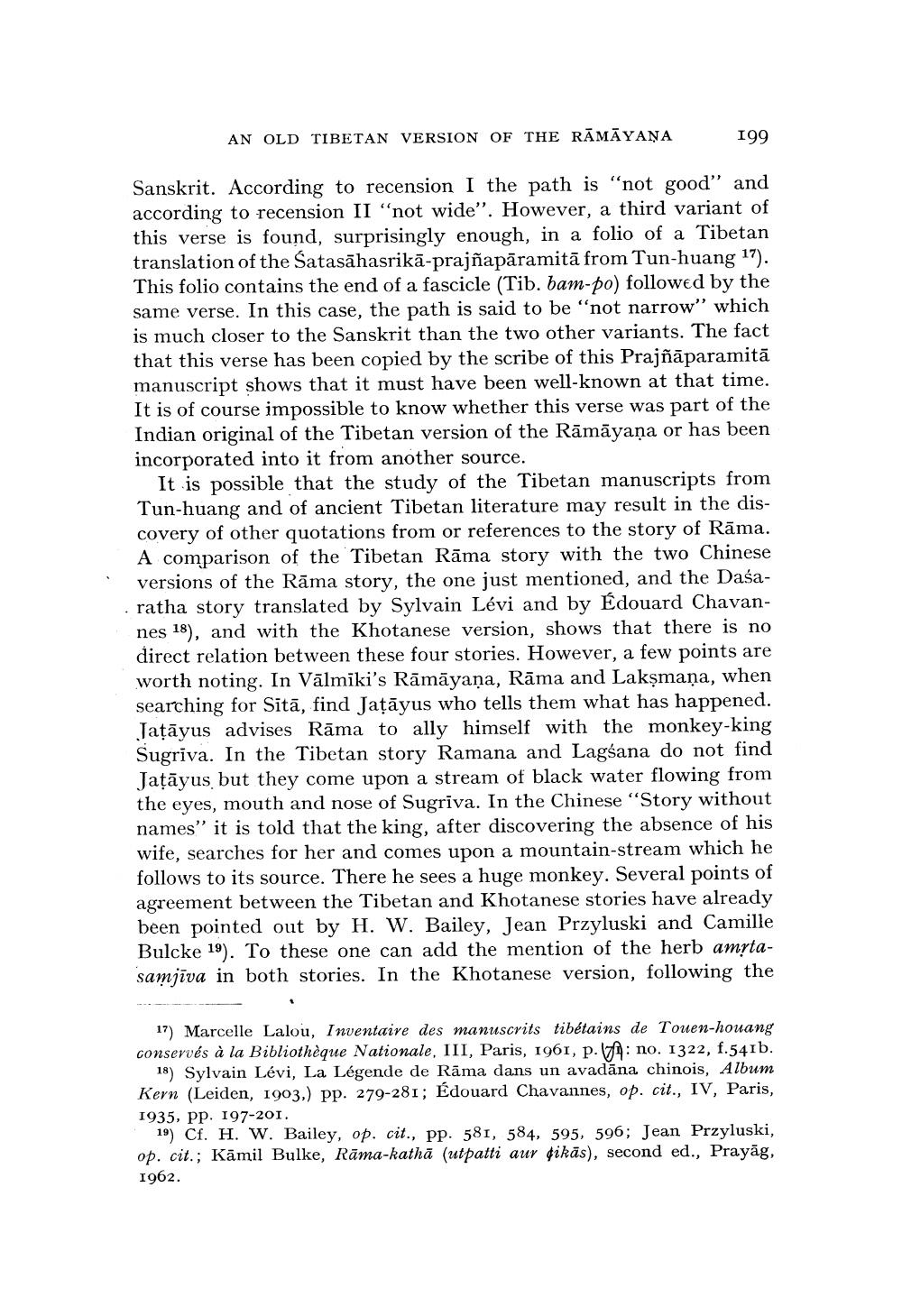________________
AN OLD TIBETAN VERSION OF THE RAMAYANA
199
Sanskrit. According to recension I the path is "not good" and according to recension II "not wide". However, a third variant of this verse is found, surprisingly enough, in a folio of a Tibetan translation of the Satasahasrika-prajñapāramitā from Tun-huang 17). This folio contains the end of a fascicle (Tib. bam-po) followed by the same verse. In this case, the path is said to be "not narrow" which is much closer to the Sanskrit than the two other variants. The fact that this verse has been copied by the scribe of this Prajñāparamitā manuscript shows that it must have been well-known at that time. It is of course impossible to know whether this verse was part of the Indian original of the Tibetan version of the Rāmāyaṇa or has been incorporated into it from another source.
It is possible that the study of the Tibetan manuscripts from Tun-huang and of ancient Tibetan literature may result in the discovery of other quotations from or references to the story of Rāma. A comparison of the Tibetan Rama story with the two Chinese versions of the Rāma story, the one just mentioned, and the Daśaratha story translated by Sylvain Lévi and by Édouard Chavannes 18), and with the Khotanese version, shows that there is no direct relation between these four stories. However, a few points are worth noting. In Valmiki's Rāmāyaṇa, Rāma and Lakṣmaṇa, when searching for Sitā, find Jaṭāyus who tells them what has happened. Jaṭāyus advises Rāma to ally himself with the monkey-king Sugriva. In the Tibetan story Ramana and Lagśana do not find Jaṭayus but they come upon a stream of black water flowing from the eyes, mouth and nose of Sugrīva. In the Chinese "Story without names" it is told that the king, after discovering the absence of his wife, searches for her and comes upon a mountain-stream which he follows to its source. There he sees a huge monkey. Several points of agreement between the Tibetan and Khotanese stories have already been pointed out by H. W. Bailey, Jean Przyluski and Camille Bulcke 19). To these one can add the mention of the herb amṛtasamjiva in both stories. In the Khotanese version, following the
17) Marcelle Lalou, Inventaire des manuscrits tibétains de Touen-houang conservés à la Bibliothèque Nationale, III, Paris, 1961, p.: no. 1322, f.541b.
18) Sylvain Lévi, La Légende de Rama dans un avadāna chinois, Album Kern (Leiden, 1903,) pp. 279-281; Édouard Chavannes, op. cit., IV, Paris, 1935, pp. 197-201.
19) Cf. H. W. Bailey, op. cit., pp. 581, 584, 595, 596; Jean Przyluski, op. cit.; Kamil Bulke, Rama-katha (utpatti aur tikās), second ed., Prayag, 1962.




